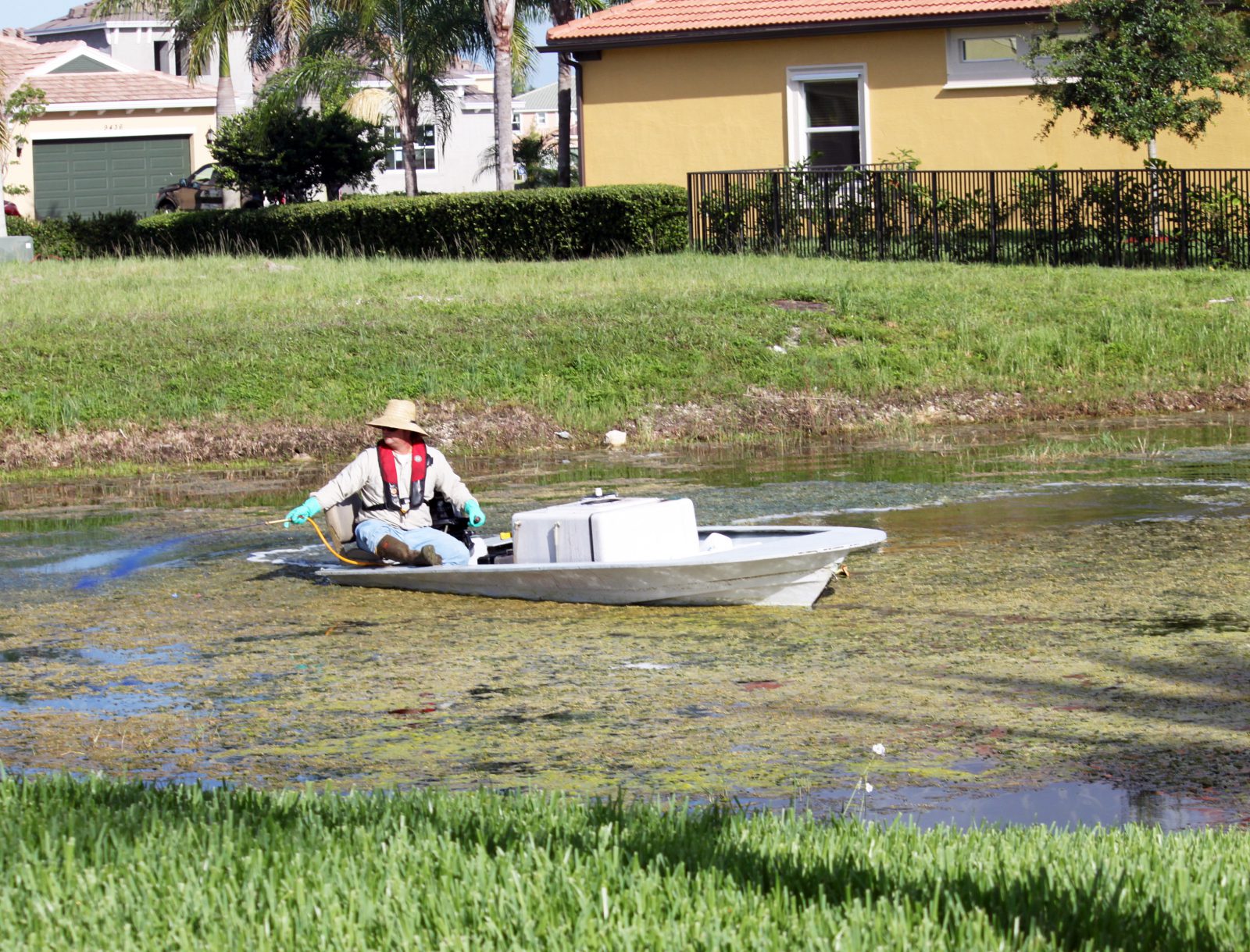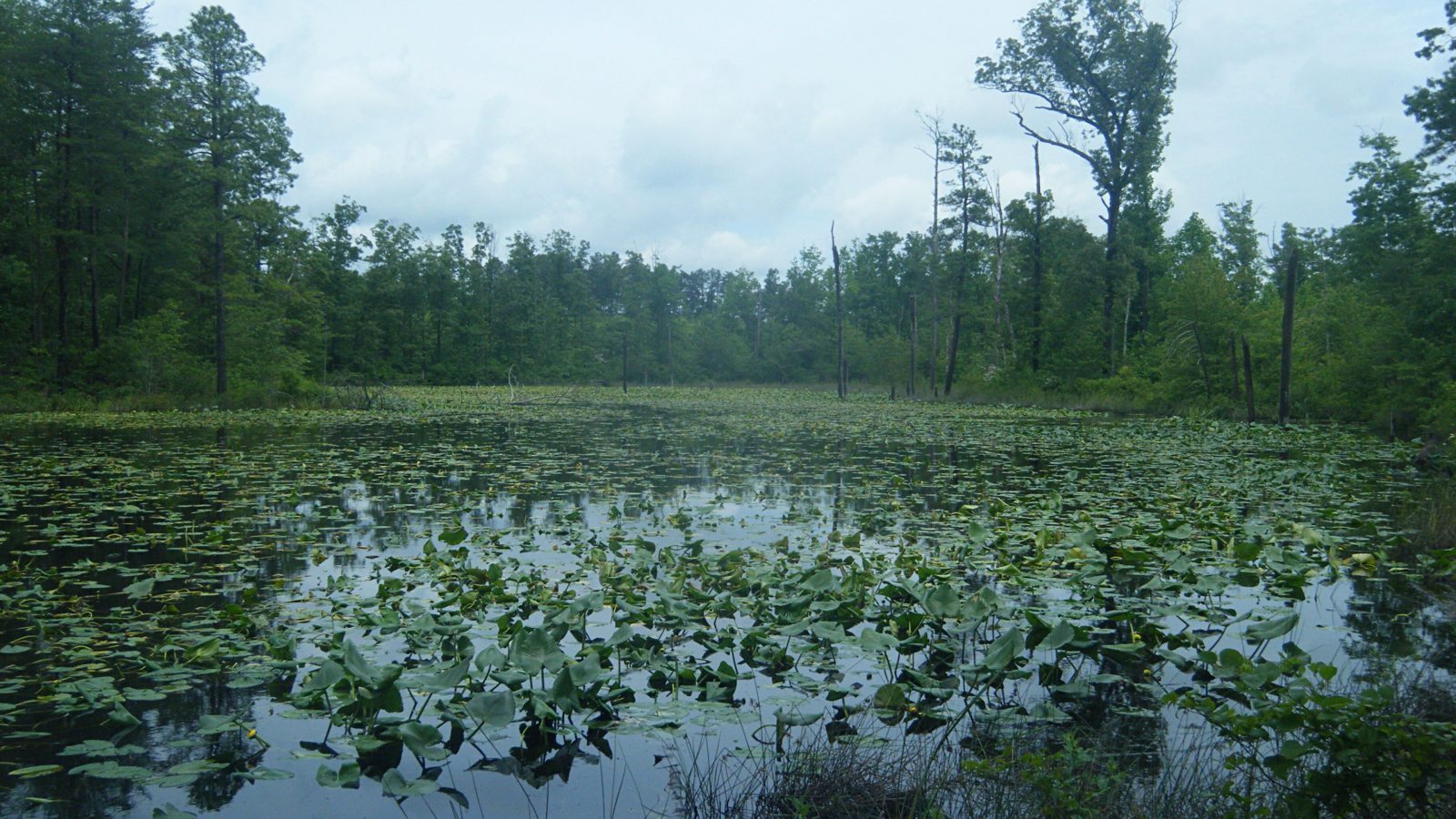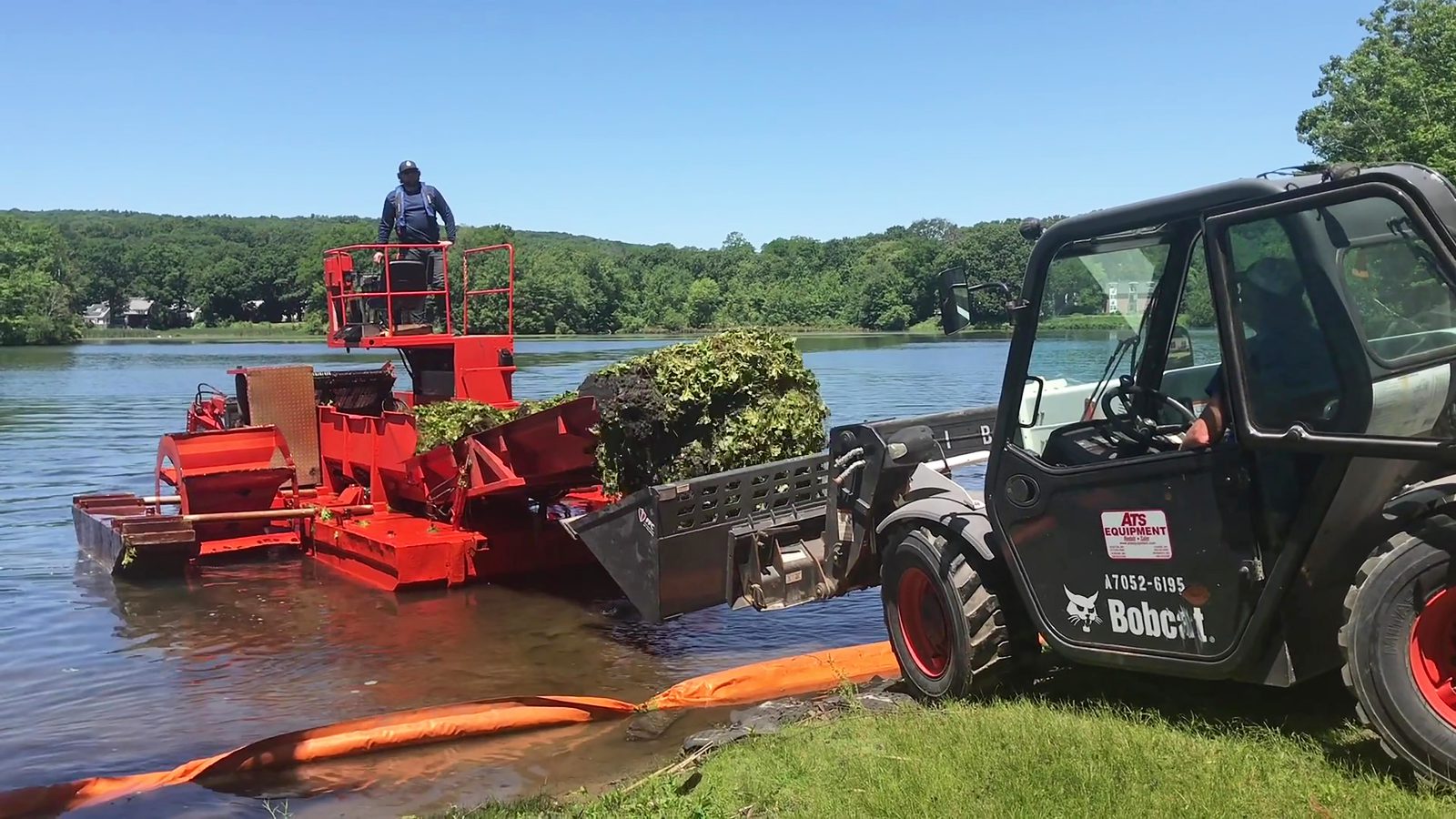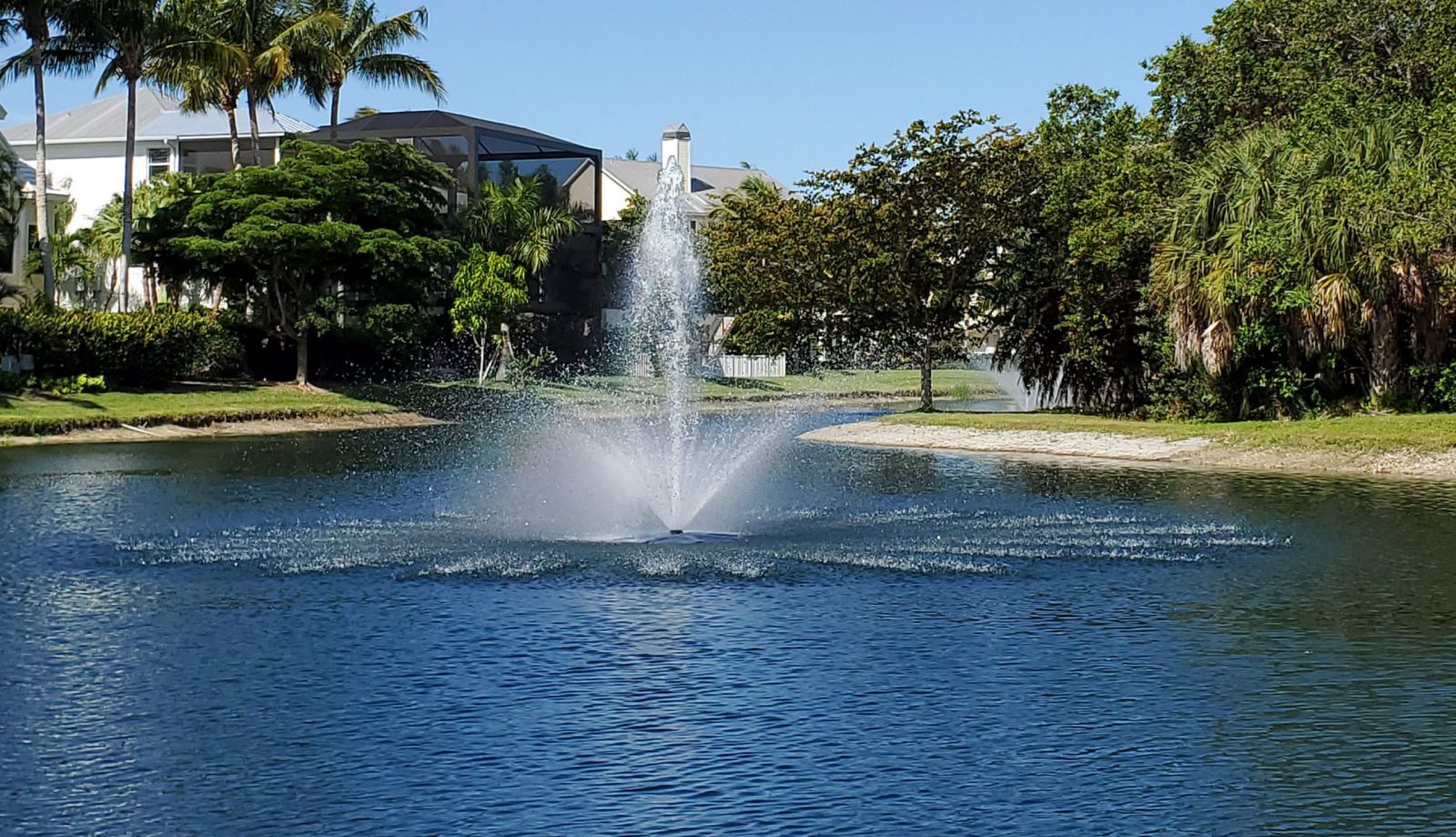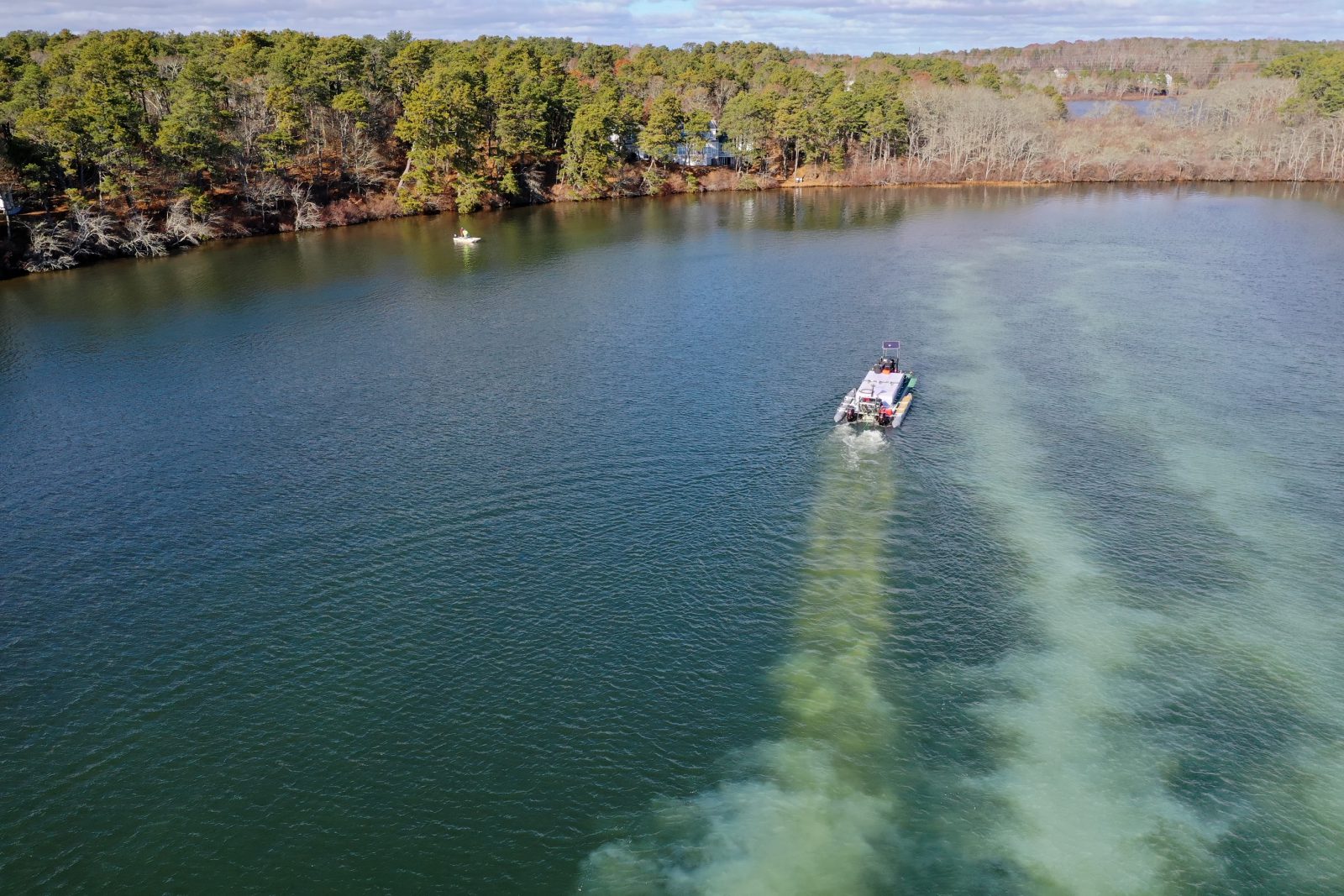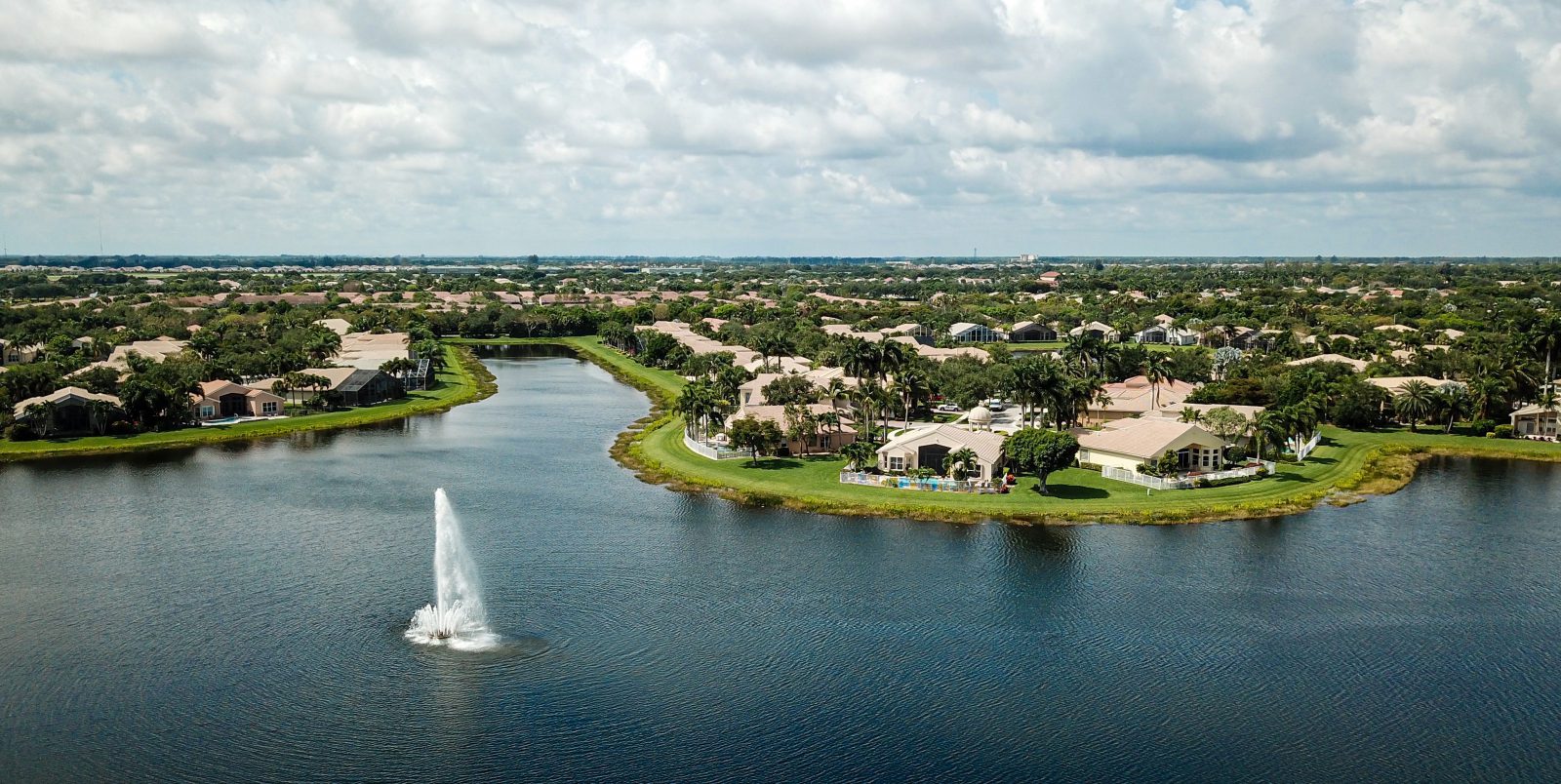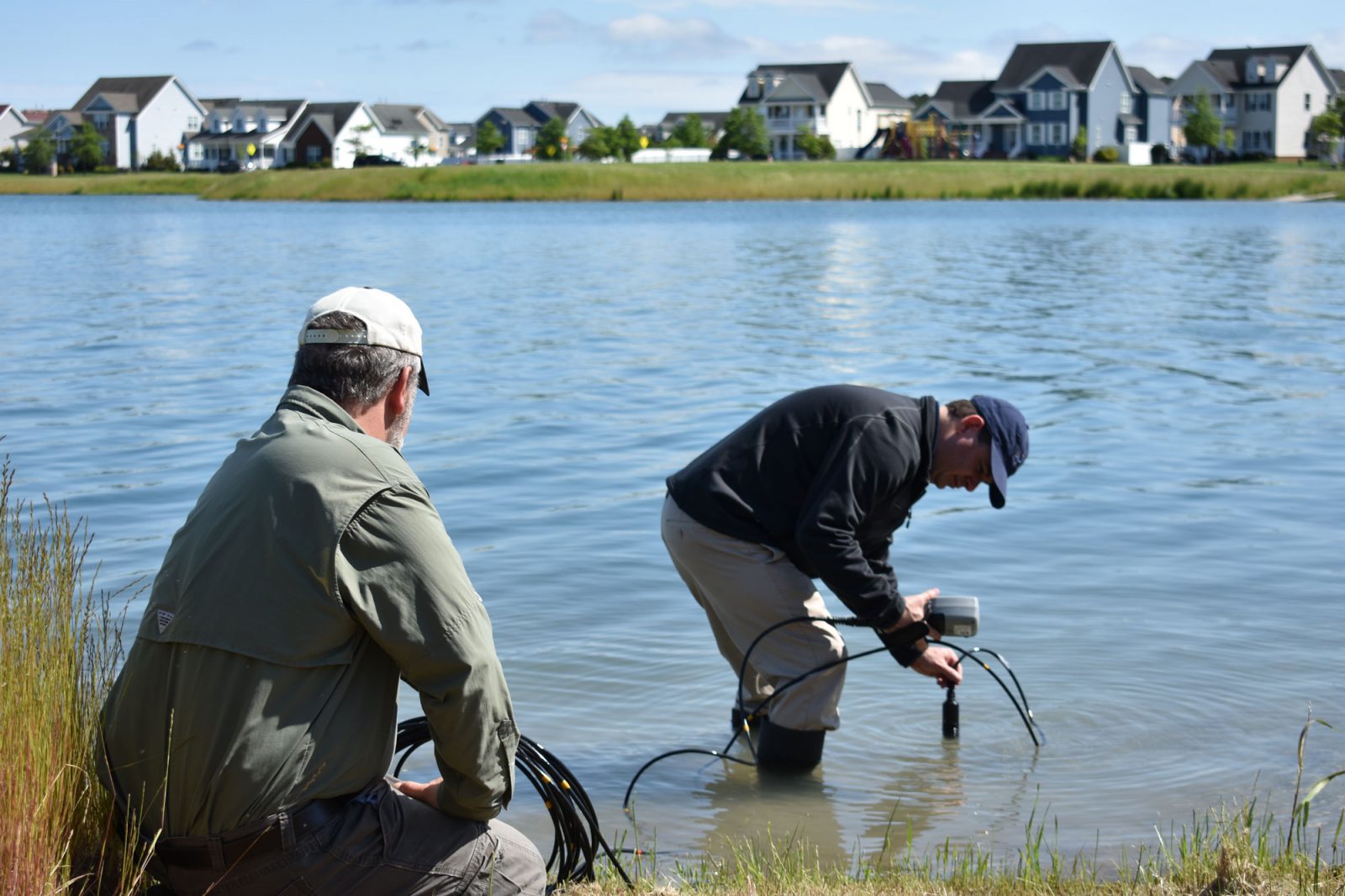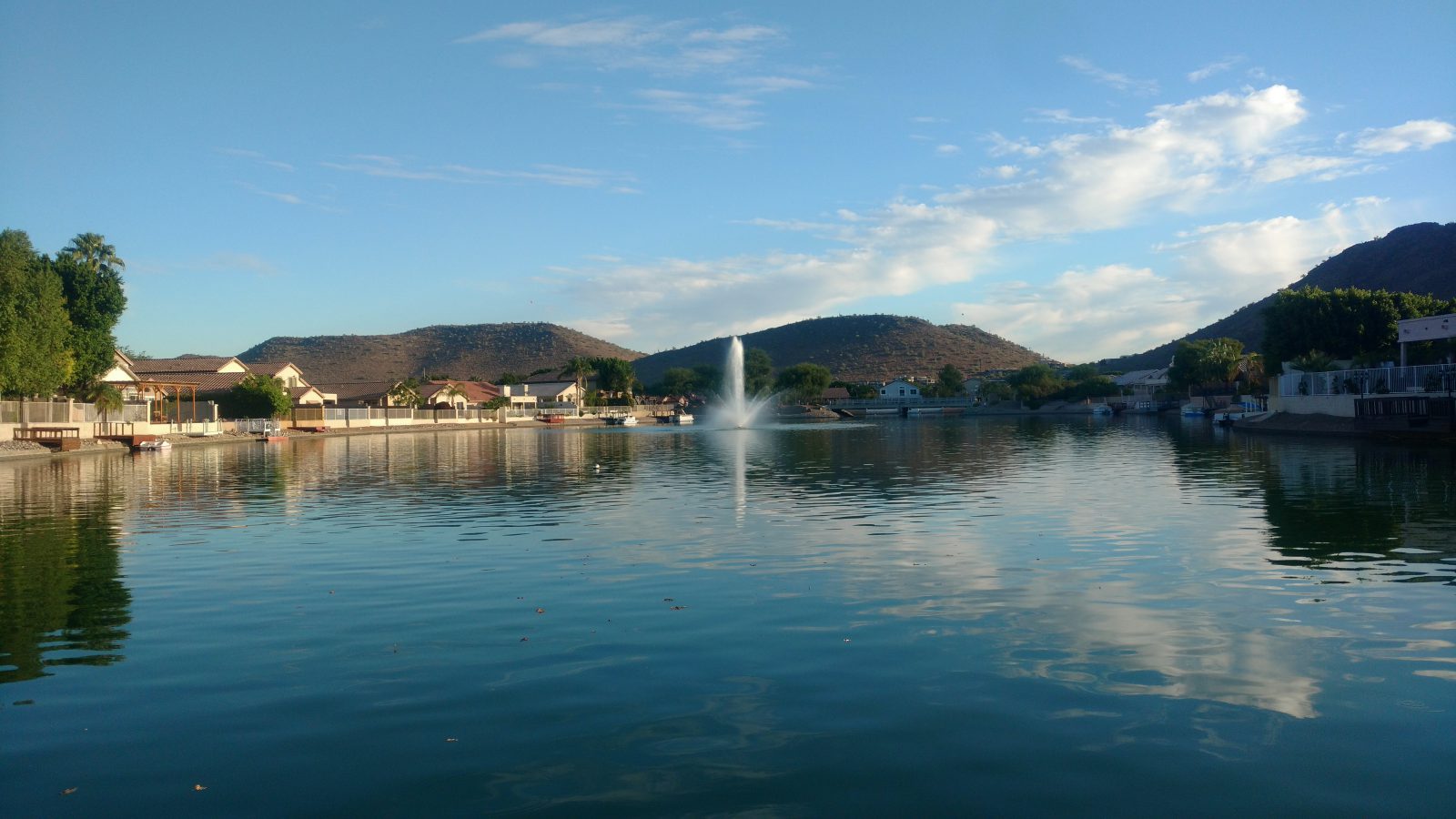
Your Comprehensive Guide to Managing Aquatic Weeds and Algae
Lakes and ponds play incredible roles in our communities; they create beautiful backdrops for swimming, fishing, and boating, they provide refuge for beneficial birds and animals for nature-lovers to observe, and they serve as indispensable resources for irrigation, drinking water, and stormwater collection. Each of us deserves to utilize and enjoy our waterbodies to the maximum, but unfortunately, these benefits can be dismantled by so many hurdles – most commonly, the growth of undesirable aquatic weeds and algae.
We all have been hit with a feeling of aversion when we see a waterbody covered in green, floating growth, but the problems can extend far beyond aesthetics:
Nuisance aquatic weeds and algae may:
- Clog stormwater equipment
- Tangle boat motors
- Ensnare swimmers
- Produce foul odors
- Release potential toxins
- Deplete dissolved oxygen
- Trigger fish kills
- Develop muck and bottom sludge
Supporting the ecological balance of our waterbodies is not only important to protect their use and enjoyment, but it is also essential to preserve the safety and longevity of these precious assets. In order to do that, stakeholders need to find an aquatic expert who shares this goal and has the expertise to help them keep undesirable weeds and algae at bay.
Nuisance and Invasive Aquatic Weeds
Nuisance and invasive weeds can wreak havoc on aquatic ecosystems by overpopulating and crowding out native species. The first step in managing aquatic weeds is identification. Aquatic weeds fall into four primary categories:
Submerged: Submerged plants are those plants that grow almost entirely under the surface of the water, although they do have the potential to “top out” and reach the surface. When this occurs, you may also see the tips of the plants grow long enough that they lay over and float on the surface of the water. Submersed plants typically cause the most problems for boating, fishing, and aquatic life, because of the density of their growth, and their ability to completely and quickly dominate any aquatic system in which they are found.
Floating: Floating plants are those plants that are vascular and do have roots, but their roots are not necessarily established in the bottom sediment. These species, whether rooted or not, have most if not all of their leaves and other plant tissue floating on the surface of the water. Floating plants that are not rooted in the bottom sediment tend to be very prolific invaders as they are able to move rapidly and spread quickly over the surface of a lake or pond, and even drift or wash into surrounding waterways. Many invasive floating plants are commonly found in small water features and gardens and will often become a nuisance in nearby lakes and ponds.
Emergent: Emergent plants are those species that are rooted in shallow water, but that stand upright with the majority of their plant tissue showing above the surface of the water. Typically these species will only grow in very shallow water or along the edges of the water and slightly up onto dry land. The growth pattern of emergent plants often limits them to these areas and they are often not an issue in larger lakes or ponds with deeper water, but they can completely dominate shallow shoreline areas and, even worse, destroy hundreds or thousands of acres of wetlands and marsh areas which remain shallow or only slightly wet throughout the year.
Wetlands: Wetlands provide food and shelter for many different species and are vital filters for surrounding watersheds. Human disturbance often leads to non-native species being introduced to wetlands and such species reduce existing native vegetation. Many of these species will often shade out the competition or create a complex root system that prevents the growth of other plants. Further upland other invasive species will create issues in woodland areas and monocultures of non-native species will reduce biodiversity.
Managing Aquatic Weeds
Nuisance and invasive weeds can be very difficult to control, which is why it is important to detect and eliminate them early in the life cycle. Regular monitoring and professional inspections make it possible to identify growth and intercept it with a variety of management solutions based on the target species:
Highly-selective herbicides: Preventative management should always be the first option, but the professional application of EPA-registered herbicides can yield excellent results. Licensed professionals can apply a “reduced risk” herbicide called ProcellaCOR, which eliminates undesirable weeds by targeting their unique growth mechanisms without affecting native beneficial species. Advanced drone technology has made it easier than ever to identify problematic growth and complete safe, highly targeted applications in areas that are ecologically sensitive, dangerous, or hard to reach.
Physical removal: Mechanical harvesting is well-suited for clearing large areas of nuisance vegetation or cutting channels through dense vegetation to enhance recreational access. Aquatic weed harvesting services can be performed for many different species of vegetation, but is most effective for floating plants that form a dense surface canopy on the water’s surface. Stakeholders may also consider hand-pulling, which is effective when done properly. Many undesirable weeds reproduce through fragmentation, so it’s key to remove every part of the weed for the long-term success of the project.
Cutting and burning: For some emergent and wetland species like Phragmites, herbicide applications are used in conjunction with the diligent removal of dead stalks through cutting and burning. This is necessary for species with rhizomes, complex root systems that allow the species to quickly repopulate. These efforts will likely be required over the course of 3-5 years to fully establish control.
Grass carp: Many lake and pond owners can also invest in herbivorous fish, such as sterile grass carp, to further control nuisance growth. These fish feed on aquatic weeds, thus reducing the pond’s overall biomass and slowing the nutrient-loading cycle caused by seasonal vegetation die-off. Grass carp are legal to stock in many states, but not all of them. Contact your local Parks & Wildlife Department or aquatic expert to determine if grass carp stocking is permitted in your region.
Nuisance and Harmful Algae
Phytoplankton, better known as algae, is present in all lakes and ponds, though we generally only become aware of it when it reaches nuisance levels. Algae can appear in many forms and colors. It has no true leaves, stems, or roots and reproduces by means of spores, cell division, or fragmentation. Algae typically falls into three primary categories:
Filamentous: Patches of filamentous algae are typically long, stringy and slimy. The filaments are made up of cells joined end to end which gives the thread-like appearance. These patches are often bright green, but can exhibit browns or yellows – especially if the algae is dying. Small stormwater ponds and large lake shorelines can be overcome with filamentous algae due to stagnation or high nutrient load; without proper management, filamentous algae can be detrimental to an aquatic system.
Planktonic: Planktonic algae are microscopic organisms that range in color from light blue and green to golden and red; they are made up of one cell or colonies of single cells. When blooming or visually dense, planktonic algae appear more like dye in the water and cannot be pulled out of the water like filamentous or macro-algae. Blooms of planktonic algae will often blow across the pond with the wind and concentrate in corners or shorelines of the pond. High concentrations can result in oxygen depletion and lead to fish kills. Likewise, some species like Cyanobacteria (blue-green algae) are found to be toxic to humans, fish, and wildlife.
Macro-Algae: Macro-algae are a group of algae more common in marine than freshwater systems; seaweeds are a type of macro-algae. As multicellular algae, they are often confused with aquatic plants and occupy a similar ecological niche. Macro-algae can even grow like plants with a root-like system; however, they do not have true roots.
Managing Poor Water Quality
Over-abundant algal blooms tend to manifest when there are imbalances in the ecosystem. Once properly identified through visual inspections and professional water quality testing, aquatic experts will recommend the appropriate management solutions that will help balance water quality. When water quality is more balanced, issues like algae and aquatic weeds are less likely to develop:
Management Is Different For Every Waterbody
Aquatic weeds and algae are not inherently bad. In certain cases, this growth may be a sign that the waterbody contains a healthy, vibrant ecosystem – something that a professional can help you determine. However, there are a number of reasons why people may choose to manage them. Often, this depends on the type of waterbody they oversee and how it’s used.
Community associations: Stakeholders who view their waterbodies as valuable assets to attract and delight usually strive to keep them free of all weeds and algae at all times. A clean, clear waterbody will reflect the beautiful blue sky above and enhance the visual effects of floating fountains as they spray water into the air in stunning patterns. Without plant and algae growth, opportunities for fishing and wildlife viewing may be more limited. In many cases, the waterbodies in urban areas also function as stormwater ponds that filter water and prevent flooding during rainstorms. It’s imperative to prevent nuisance growth from clogging important stormwater pipes and equipment.
Trophy fisheries: Fisheries benefit from plentiful algae and aquatic plant growth, which create valuable habitat for game fish and their prey, and release essential nutrients that support a robust food chain. Nevertheless, stakeholders may choose to manage plants if they are considered invasive or if plants growth has expanded over too much of the water’s surface, which can deplete dissolved oxygen and result in a potential fish kill. Algae blooms should also be managed if the species is identified as cyanobacteria, a form of algae that can develop toxins that are deadly to fish.
Recreational lakes: Often, these waterbodies are multi-purpose – used for swimming, kayaking, and boating, as well as fishing and nature-watching. Striking a balance between the growth of aquatic plants and algae can allow every visitor to enjoy the waterbody. This can be accomplished by managing plant growth around docks and boating spaces to prevent entangling swimmers and boat propellers, while allowing growth to occur in areas designated for fishing and wildlife viewing. Toxic algae can be particularly concerning in these waterbodies due to the dangers they pose to people and dogs. Furthermore, many recreational lakes also function as drinking water reservoirs. In these situations, managing toxic algae is of the utmost importance for not only the protection of people who use the lake, but the public as a whole.
How You Can Improve Your Local Watershed
Though these solutions are highly impactful and enhance the health of aquatic environments, the most effective approach is a proactive one. Practicing these simple, preventative measures can help reduce your daily impact on your local watershed:
- Have your pond regularly inspected and sampled to detect water quality imbalances in early stages.
- Limit the use of fertilizers for lawns and gardens, or switch to an organic brand.
- Bag grass clippings, leaves, and yard waste to keep it from decomposing in the water.
- Properly dispose of pet droppings, which are rich in nutrients that fuel nuisance growth.
- Clean up litter and organic debris in your area.
Balance Your Aquatic Ecosystem
As with most things in life, balance is important. In lake and pond management, it should be the ultimate goal. Armed with comprehensive knowledge of your waterbody and its unique components, your lake management professional can support you in developing a customized plan for the management of your aquatic ecosystem.
When the strategies, water quality testing tools, and management solutions are merged in harmony with the natural processes of your lake or pond, it can be maintained as a safe and relaxing refuge that can be enjoyed for generations.
Maintain Balanced Water Quality
SOLitude Lake Management is a nationwide environmental firm committed to providing sustainable solutions that improve water quality, enhance beauty and preserve natural resources.
SOLitude’s team of aquatic scientists specializes in the development and execution of customized lake, stormwater pond, wetland and fisheries management programs. Services include water quality testing and restoration, algae and aquatic weed control, installation and maintenance of fountains and aeration systems, shoreline erosion control, muck and sediment removal and invasive species management. SOLitude partners with homeowners associations, golf courses, private landowners, businesses and municipalities. SOLitude Lake Management is part of Rentokil, a leading business services company, operating across the United States, Canada and Puerto Rico.
For more information, visit SOLitude Lake Management at solitudelakemanagement.com, and connect on Facebook, LinkedIn and Twitter.








